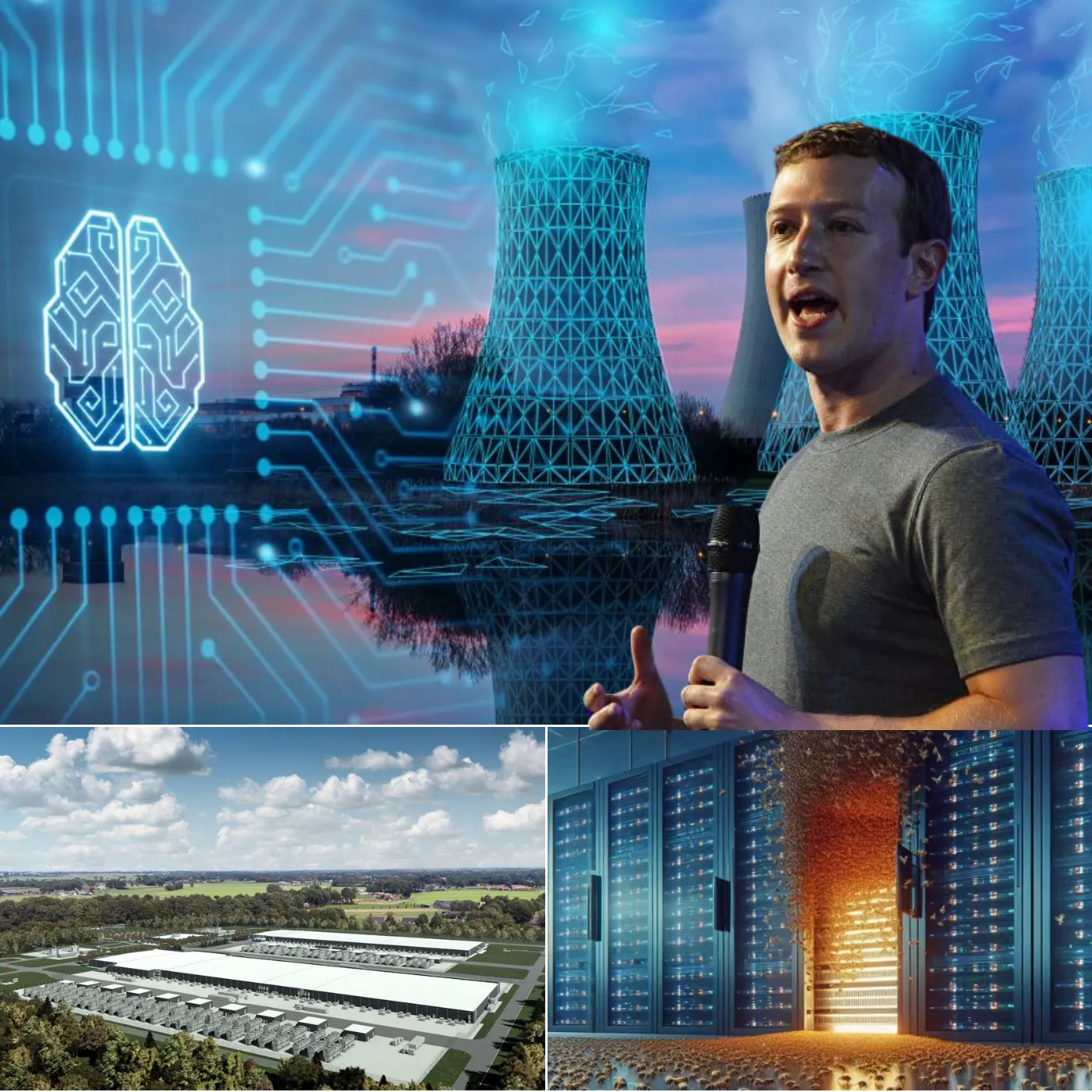

Mark Zuckerberg’s Nuclear Gamble: Will Meta’s Energy Revolution Change the Game or End in Disaster?
Meta is betting on a future dominated by AI, but this comes with a massive challenge: an astronomical energy demand. To solve this, Mark Zuckerberg planned to invest in small-scale nuclear power plants to provide clean, stable electricity for Meta’s AI supercomputing infrastructure.
However, this ambitious plan has hit a major roadblock. Environmental concerns, nuclear safety fears, and political pressures have forced Meta to put the project on hold indefinitely. Can Meta navigate through this storm and redefine the future of energy? Or will this project become one of Zuckerberg’s most controversial ideas, ultimately leading nowhere?
The Race for Nuclear Power: Is Meta Attempting the Impossible?
As AI continues to shape the global economy, Meta has realized that it cannot rely solely on traditional power grids. The company’s vast data centers already consume an enormous amount of electricity, and with the rise of Artificial General Intelligence (AGI), energy demands are expected to skyrocket.
Current power grids are unstable and increasingly vulnerable to fluctuations in supply and demand. Renewable energy sources like solar and wind, while promising, are inconsistent and require advanced battery storage systems to function reliably. Meta’s answer? Small Modular Reactors (SMRs).
The solution? Small Modular Reactors (SMRs). Unlike conventional nuclear power plants, SMRs can be built faster, are considered safer, and produce less environmental waste. Mark Zuckerberg believes that SMRs are the key to unlocking AI’s full potential and will allow Meta to control its energy supply in ways no tech company has done before.
These mini nuclear reactors could be deployed near Meta’s data centers, ensuring continuous, reliable power without depending on overloaded national grids.
Why is Mark Zuckerberg betting on SMRs?
Sustainability: Nuclear power can provide a steady energy supply without relying on fossil fuels, helping Meta achieve its carbon neutrality goals.
Scalability: SMRs can be deployed in multiple locations more easily than traditional nuclear reactors, making them an attractive option for companies needing localized power sources.
Energy Independence: Meta would no longer have to rely on external power suppliers, potentially avoiding energy shortages and fluctuating costs.
A Competitive Advantage: Controlling its own energy means Meta can outpace competitors struggling with rising energy costs.
However, despite these advantages, the project is far from being a smooth ride. Backlash and Resistance: Why Is the Project “Frozen”?
The moment news about Meta’s nuclear power plant plans leaked, a massive wave of criticism erupted. Environmental groups fiercely opposed the project, arguing that whether it’s an SMR or a full-scale nuclear plant, the risks of radiation exposure and the disposal of nuclear waste remain serious concerns.
Beyond environmental issues, nuclear industry experts and regulators also raised red flags. Can a tech company with no experience in energy production handle nuclear power responsibly? Who would be held accountable in the event of a mishap?
And let’s not forget the biggest hurdle: government regulations!
Strict nuclear safety laws in the U.S. could delay the project for years, if not decades. Regulatory approvals for nuclear plants, even small-scale ones, often require extensive reviews and compliance with numerous safety protocols.

Enormous upfront investment: Even with Meta’s deep pockets, building a nuclear plant is a financially daunting challenge. The estimated cost of developing SMRs ranges from hundreds of millions to several billion dollars.
Brand reputation risks: If the project fails, it could be one of Zuckerberg’s biggest PR disasters. Meta is already under scrutiny for privacy concerns, misinformation issues, and AI ethics, so a nuclear energy scandal could further damage its public image.
Additionally, there is also a geopolitical angle. If Meta were to develop its own nuclear power supply, how would governments react to a private company controlling such a powerful energy source? Would this make Meta a target for cyberattacks or political scrutiny?
What’s Mark Zuckerberg’s Next Move?
With intense pressure from multiple fronts, Meta has decided to put its SMR project on hold, but that doesn’t mean it’s completely abandoning the idea.
Meta’s new energy strategy:
Boosting investments in renewable energy sources like solar and wind to diversify its power supply.
Partnering with established nuclear firms rather than attempting to build its own power plants.
Optimizing AI systems to consume less energy instead of just seeking new energy sources.
Additionally, Meta is exploring alternative nuclear technologies, such as thorium-based reactors and fusion energy, both of which could be safer and more efficient than traditional nuclear fission reactors.
Mark Zuckerberg may have taken a step back, but make no mistake—he is still determined to control Meta’s energy future!
The Big Tech Energy Revolution: Is Meta the First to Make a Move?
Meta isn’t the only tech giant scrambling for an energy solution:
Google is investing heavily in nuclear fusion, a technology that could provide an unlimited clean energy source if it ever becomes commercially viable.

Microsoft has signed deals with nuclear power providers to secure stable electricity for its data centers, avoiding dependence on external grids.
Amazon is betting on large-scale solar farms and battery storage to power its operations, aiming to achieve 100% renewable energy use by 2030.
The energy war in Big Tech has officially begun!
Unlike traditional industries, tech companies are not just energy consumers—they are now becoming energy producers. As AI and cloud computing drive unprecedented power consumption, owning energy infrastructure could become a key competitive advantage.
The Future: Will Meta’s Nuclear Vision Become Reality?
So, what happens next?
Scenario 1: Meta revives its SMR project
If regulatory hurdles and public opposition ease in the future, Meta might resume its plans and pioneer private nuclear energy for the tech industry. This could redefine how AI companies approach energy consumption.
Scenario 2: Meta shifts to renewables entirely
Meta could decide that nuclear power is too controversial and focus exclusively on solar, wind, and battery technology, similar to Amazon’s approach.
Scenario 3: A major partnership emerges
Instead of going solo, Meta might join forces with a leading energy provider, allowing it to still benefit from SMRs without handling the complexities of nuclear energy on its own.
One thing is certain: Meta’s energy ambitions aren’t going away. Whether through nuclear power, renewables, or a hybrid model, Zuckerberg is determined to future-proof Meta’s energy supply in an AI-driven world.


















